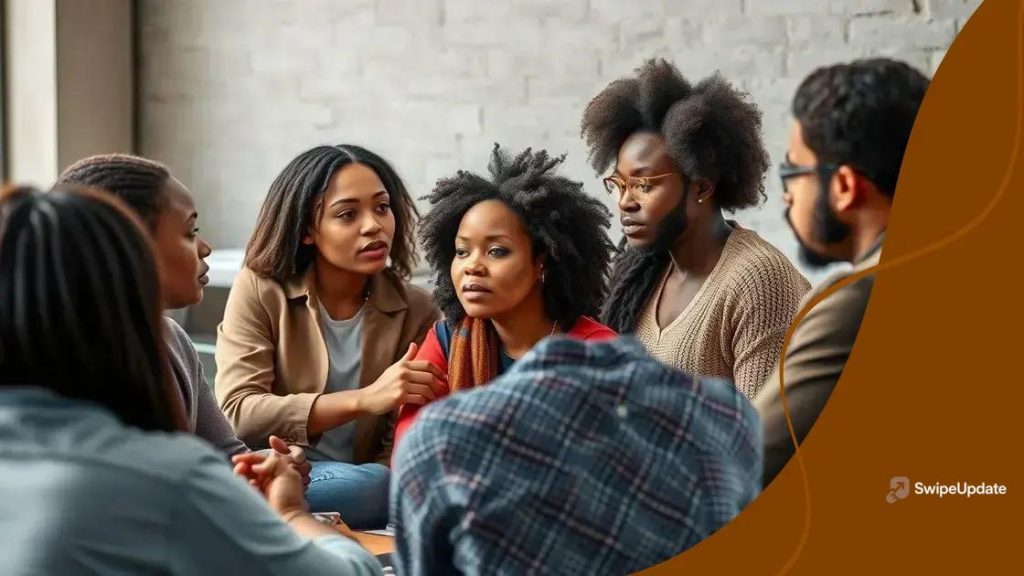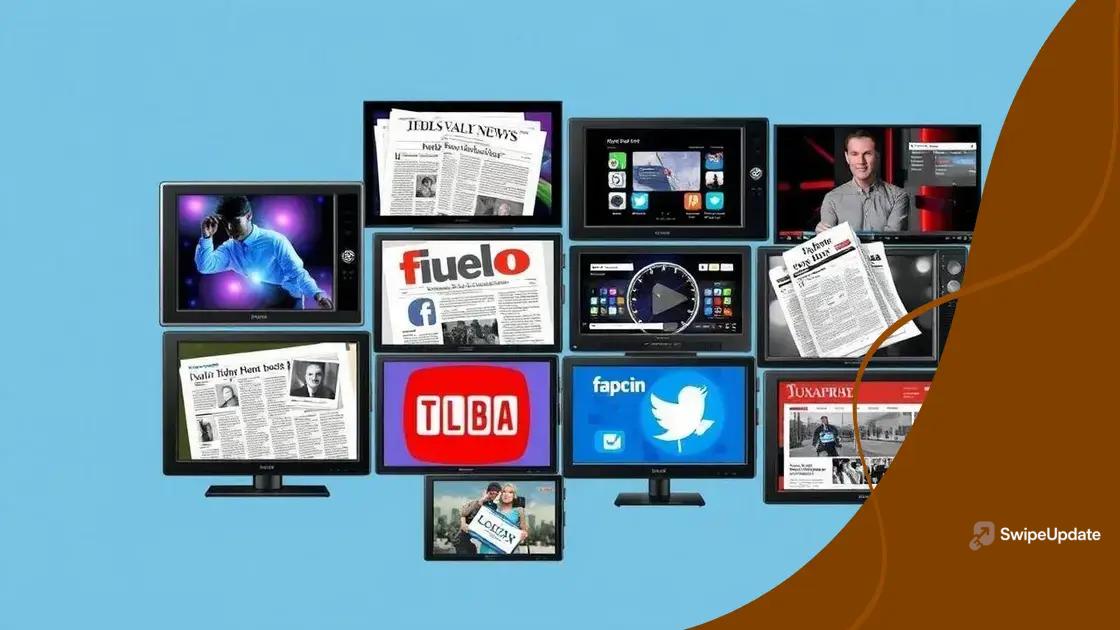Public opinion on key social issues: what you need to know

Public opinion on key social issues significantly influences policy decisions by reflecting citizens’ concerns, driving legislative change, and shaping societal dynamics through collective voices and grassroots movements.
Public opinion on key social issues plays a vital role in shaping our communities and policies. Have you noticed how certain topics ignite passionate discussions? Let’s dive into the nuances of how opinions evolve and impact society.
Understanding public opinion dynamics
Understanding public opinion dynamics is essential in navigating the complexities of society today. Opinions can shift based on various factors, such as media, social movements, and cultural changes. Let’s explore how these dynamics come into play.
The Factors Influencing Public Opinion
Several elements contribute to shaping public opinion. These include personal experiences, education, and exposure to different viewpoints. Additionally, social media platforms play a significant role in spreading information and shaping narratives.
- Personal experiences shape perceptions.
- Education influences understanding.
- Media coverage can amplify specific viewpoints.
- Social movements rally public support for causes.
Moreover, public opinions are not static. They can evolve over time due to events like elections, crises, or significant social changes. For instance, during a national crisis, you might see people rally around shared values or beliefs. This collective response showcases the powerful impact emotions can have on shaping public sentiment.
The Role of Media in Opinion Dynamics
The media serves as a bridge between various viewpoints and the public. By choosing which stories to highlight, they can influence the perception of issues. In today’s world, news outlets and social media platforms compete for attention, making it crucial for them to deliver engaging content.
- Media can frame issues in specific ways.
- Different outlets may present conflicting narratives.
- Social media can amplify public discourse.
As individuals, it’s vital to engage critically with the information we consume. Understanding how information is presented can help us form more balanced perspectives. This knowledge empowers us to participate in discussions meaningfully, ultimately enriching our communities.
Key social issues shaping opinions today
Key social issues shape opinions in profound ways today. Various factors contribute to what people think and believe. From economic concerns to equality movements, these issues resonate deeply with individuals and communities.
Economic Inequality
One pressing issue is economic inequality. Many individuals feel the effects of wealth disparity in their daily lives. Access to opportunities often varies dramatically based on economic status, leading to increased awareness and activism among citizens.
- Economic disparity affects education access.
- People advocate for fair wages.
- Programs targeting poverty gain support.
This awareness has sparked conversations around policies aimed at reducing these inequalities. Citizens are becoming more vocal about their needs, pushing for change.
Social Justice Movements
Additionally, social justice movements have gained momentum. Movements advocating for racial and gender equality, as well as LGBTQ+ rights, are critical in shaping public discourse. The participation of diverse voices has brought attention to systemic issues that often go unchecked.
- Activism promotes awareness and education.
- Public demonstrations show solidarity.
- Community support can change perceptions.
As people engage with these topics, their opinions are influenced by new information and experiences. Understanding these dynamics helps in recognizing the interconnectedness of social issues.
Environmental Concerns
Furthermore, environmental concerns are increasingly significant. Issues such as climate change and pollution impact daily life, leading to heightened awareness about sustainability. Communities are rallying around initiatives to protect the planet.
- Grassroots movements promote eco-friendly practices.
- Policy changes focus on renewable energy.
- Public campaigns raise awareness about conservation.
This evolving landscape of opinions illustrates how interconnected our challenges are. Each of these social issues not only defines individual viewpoints but also fosters dialogue among diverse groups.
The role of media in influencing perceptions

The role of media in influencing perceptions is significant in today’s world. Media platforms shape how we view different issues and events. They provide the information that can sway public opinion, making media literacy essential.
Types of Media Impacting Opinions
Various types of media play distinct roles in shaping perceptions. Television, social media, and print all contribute in unique ways to how news is presented and consumed. Each medium has its strengths and weaknesses that shape the narrative.
- Television delivers news through visuals and emotion.
- Social media enables quick sharing of opinions and information.
- Print media provides in-depth analysis and context.
The speed at which information spreads through social media can rapidly influence public perceptions, sometimes leading to misinformation. This highlights the importance of verifying facts before accepting them as truth. Engaging with multiple sources can provide a broader view.
Media Framing
Another important concept is media framing. This refers to how information is presented to the public. The way stories are framed can highlight certain aspects while downplaying others, affecting how audiences interpret the messages.
- Framing shapes the emotional response to news.
- Different frames can lead to varying public reactions.
- Public understanding may shift based on how issues are framed.
For example, framing a protest as a peaceful demonstration versus a riot can drastically change public opinion about the event. Understanding media framing is key to evaluating the messages we receive.
Additionally, media bias is a critical factor in shaping perceptions. Different outlets can report the same story with a slant that reflects their values or agendas. Recognizing bias in reporting helps individuals navigate the information landscape more effectively. By staying informed and analyzing multiple sources, we can better understand the complexities of issues presented in the media.
How public opinion informs policy decisions
How public opinion informs policy decisions is a crucial aspect of any democratic society. Policymakers often rely on the sentiments of the public when creating laws and regulations. This connection means that understanding public opinion can lead to better policy outcomes.
The Feedback Loop
A feedback loop exists between public opinion and policymaking. Citizens express their views through surveys, polls, and voting. When the government responds to these opinions, it can create a more engaged citizenry. This interaction fosters trust and accountability, as people see their voices influencing outcomes.
- Surveys gauge public sentiment on key issues.
- Voting reflects citizen priorities.
- Responsive policies enhance public trust.
However, this relationship is not always straightforward. Sometimes, public opinion can be misinformed or influenced by media framing, leading to policy outcomes that may not align with sound evidence. Therefore, assessing the validity of public opinion is essential for balanced decision-making.
Case Studies and Examples
Numerous case studies illustrate how public opinion shapes policy. For example, recent movements addressing climate change have prompted governments to set ambitious environmental targets. This shows that as public concern grows, policymakers feel pressured to act swiftly.
- The rise of health care as a priority influenced legislation in many countries.
- Public protests often lead to policy reviews.
- Grassroots movements can bring about legislative change.
Additionally, major events, such as economic downturns, can shift public priorities. In these instances, policymakers often reassess their agendas to align with the evolving public perspective. This adaptability is vital for maintaining legitimacy in governance.
Ultimately, while public opinion is a powerful force in shaping policy decisions, it must be part of a larger, informed dialogue. Engaging with diverse viewpoints ensures that policy not only reflects public sentiment but is also grounded in facts and research.
Case studies of public opinion impact
Case studies of public opinion impact demonstrate how collective sentiments can influence significant changes in policy and society. These examples show the power of citizens’ voices in shaping the world around them.
Case Study: Climate Change Movement
The climate change movement is a prime example of public opinion affecting policy. Over recent years, growing concern over climate issues has led to widespread activism. As public awareness increased, policymakers faced pressure to address the crisis.
- Mass protests brought visibility to climate action.
- Young activists like Greta Thunberg inspired global movements.
- Many countries set more aggressive sustainability targets in response.
This shift illustrates how public demand can lead to governmental action. The connection between citizens and leaders became particularly evident during major summits where public opinion was a central theme.
Case Study: Health Care Reform
Another example is the push for health care reform in the United States. Public demand for affordable health care options led to significant changes in legislation. As dissatisfaction with the existing system grew, citizens voiced their concerns through campaigns and protests.
- Surveys showed rising support for universal health care.
- Grassroots organizations mobilized communities.
- Political candidates embraced health reform as a key campaign issue.
This case highlights how sustained public pressure can lead to legislative debates. Policymakers often have to consider public opinion to maintain their legitimacy and support.
Case Study: Social Justice Movements
Social justice movements, especially those focusing on racial equality, have also showcased the impact of public opinion. The protests following events such as the death of George Floyd sparked national and global conversations about race and justice.
- Social media played a vital role in spreading awareness.
- People rallied in support of policy reforms.
- Calls for police accountability became more pronounced.
This newly ignited public discourse pressured governments to reconsider existing policies and push for reforms to ensure greater equality and justice. The conversations that arose from these movements continue to shape the landscape of public opinion.
Overall, these case studies reflect how public opinion can drive significant change. Understanding the connection between citizens’ voices and policymaking is crucial for fostering a responsive and responsible government.
FAQ – Frequently Asked Questions about Public Opinion and Policy
How does public opinion affect policy decisions?
Public opinion shapes policy decisions by reflecting the values and concerns of citizens, prompting lawmakers to align their actions with the expectations of their constituents.
What role do grassroots movements play in influencing public opinion?
Grassroots movements mobilize citizens around specific issues, raising awareness and driving public dialogue, which can pressure policymakers to respond.
Why is media framing important in shaping opinions?
Media framing influences how issues are perceived by highlighting certain aspects over others, thus impacting public reactions and discussions.
Can individual voices really make a difference in public opinion?
Yes, individual voices contribute to the larger conversation, and when amplified collectively, they can lead to significant changes in public opinion and policy.
